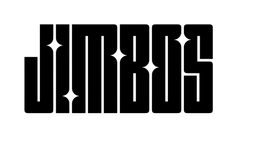Clay Mitt vs Traditional Clay Bar – Which One Should You Use?
Both clay mitts and clay bars remove embedded contaminants from your paint, but which is better for your detailing setup? The answer depends on your experience, the level of contamination, and how often you detail your car.
In this post, we’ll break down the pros and cons of each so you can choose the safest, most efficient option—and avoid damaging your paint.
What Do Clay Mitts and Clay Bars Have in Common?
Both tools do the same essential job: removing surface contaminants like brake dust, tree sap, and rail dust that regular washing can’t reach. They prep the surface for protection and leave the paint smooth and clean.
The difference is in the format and ease of use.
What Is a Clay Mitt?
A clay mitt is a microfiber-lined glove with a polymerized rubber surface on one side. It’s designed to be reused multiple times and can be cleaned between uses. It’s best for:
- Detailers who want speed and efficiency
- Cars with light to moderate contamination
- People who want an easier, more ergonomic claying option
What Is a Traditional Clay Bar?
Clay bars are soft, kneadable blocks that conform to the surface of the car. They’re great for:
- Heavy contamination
- Spot treatment
- Maximum precision and pressure control
However, once you drop a clay bar on the ground, you have to throw it away. You also need to keep kneading it to expose a clean surface as it gets dirty.
Clay Mitt vs Clay Bar: Pros and Cons
| Feature | Clay Mitt | Clay Bar |
|---|---|---|
| Ease of Use | Very easy | Takes practice |
| Reusable | Yes | Somewhat (but toss if dropped) |
| Best for | Light to moderate use | Heavy or spot treatment |
| Speed | Faster | Slower |
| Cost per Use | Lower | Higher |
Which One Should You Choose?
If you’re claying your car a couple of times a year and want the fastest, safest experience—go with a mitt.
If you’re tackling serious fallout, overspray, or contamination that needs more pressure and precision, stick with a traditional clay bar.
Pair Your Clay with the Right Lubricant
No matter which method you choose, lubrication is key. The Super Soaper is an ideal clay lube when diluted in a spray bottle or foam pump.
Once the claying is done, follow up with Tough As Shell ceramic spray for long-lasting protection.
Get the Tools Pros Use for Claying
Whether you choose a mitt or bar, make sure you have the right lube and protection to finish the job right.
Related Posts
- What Is a Clay Bar and How It Works
- How to Use The Super Soaper as a Clay Lubricant
- Clay Bar Step-by-Step Guide



